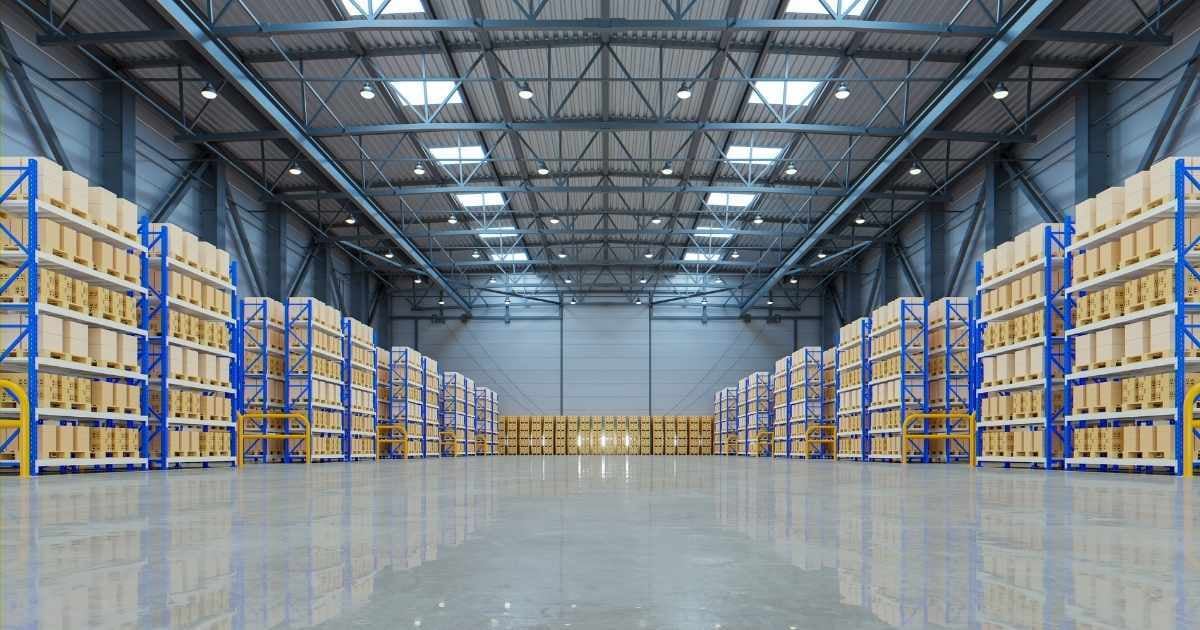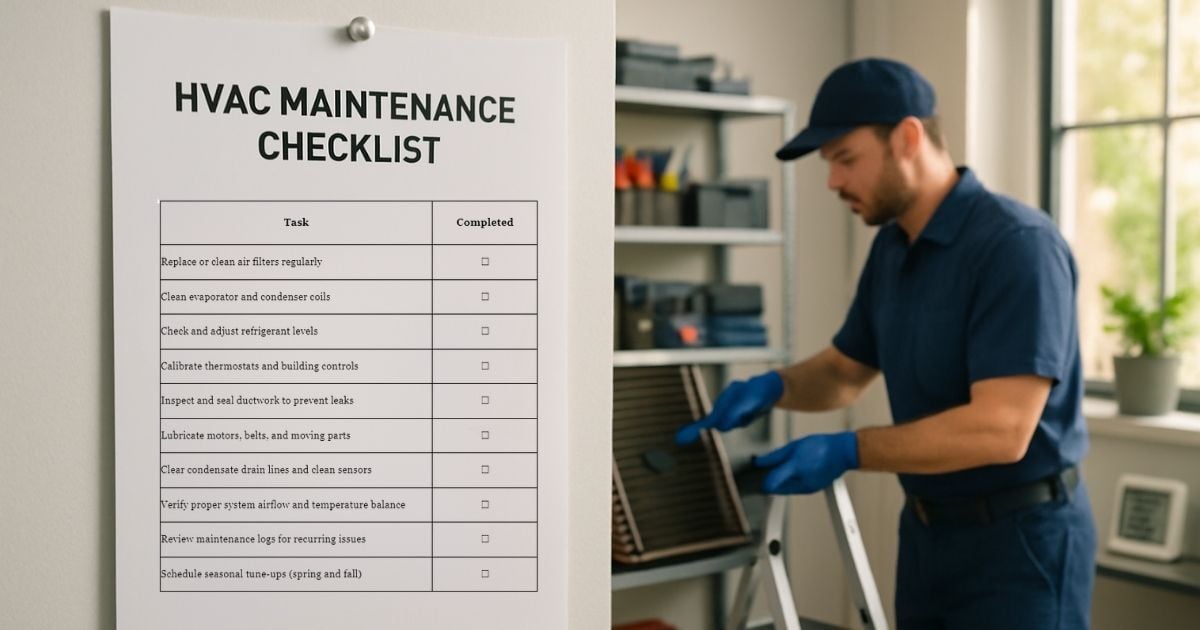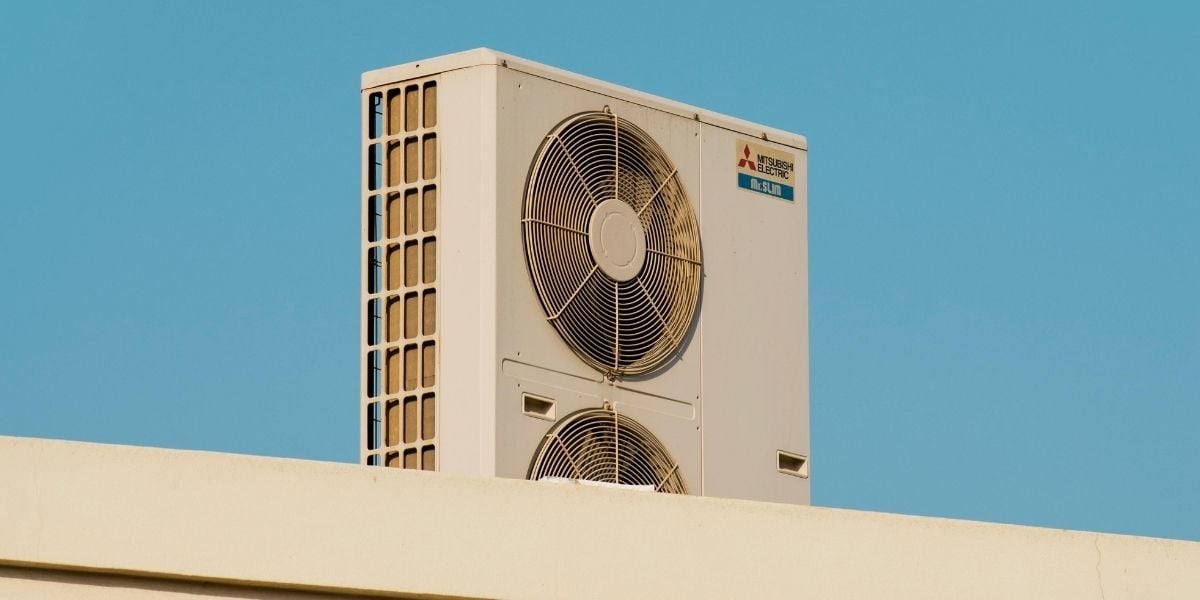Building Maintenance Practices That Work
August 4th, 2025
4 min read

Keeping a commercial building running smoothly can feel like juggling bowling pins on a tightrope—one slip and everything comes crashing down. Unexpected HVAC breakdowns, hidden pipe leaks, and soaring energy bills grind operations to a halt, drain your budget, and frustrate tenants.
At Harold Brothers Mechanical Contractors, we’ve spent two decades fine-tuning preventative maintenance plans for office parks, schools, healthcare centers, and manufacturing plants. Our team knows exactly where buildings tend to falter and how to stop small issues from snowballing into emergency repairs.
In this guide, you’ll discover the top 10 building maintenance practices that slash downtime, cut energy costs, and extend equipment life. Think of this as your building’s roadmap to reliability. No surprises, just smooth operations.
What Is a Preventative Maintenance Plan and Why Do You Need One?
%20-%202025-12-11T075417.190.jpg?width=336&height=448&name=Untitled%20(768%20x%201024%20px)%20-%202025-12-11T075417.190.jpg) A solid preventative maintenance plan is the foundation of any successful facility management strategy. Without one, even the best team ends up reacting to issues instead of preventing them.
A solid preventative maintenance plan is the foundation of any successful facility management strategy. Without one, even the best team ends up reacting to issues instead of preventing them.
From Reactive to Proactive: The Role of a Maintenance Schedule
Think of your maintenance plan like a calendar for building health checks. It should clearly outline:
- What needs to be inspected or serviced
- When tasks should occur (weekly, monthly, quarterly, seasonally)
- Who is responsible, whether it’s your internal staff or outside vendors
Include all major systems:
- HVAC
- Plumbing
- Electrical
- Fire protection
- Elevators
- Building envelope
To learn how to structure a plan that supports long-term performance, see the U.S. Department of Energy’s Operations & Maintenance Best Practices Guide (Release 3.0).
The Power of Small Tasks: Filters, Lubrication, and Tune-Ups
%20-%202025-12-11T075606.910.jpg?width=285&height=380&name=Untitled%20(768%20x%201024%20px)%20-%202025-12-11T075606.910.jpg) Routine checks like changing air filters, inspecting belts, or greasing pumps may seem small, but they prevent wear, improve efficiency, and extend system life.
Routine checks like changing air filters, inspecting belts, or greasing pumps may seem small, but they prevent wear, improve efficiency, and extend system life.
At Harold Brothers, we’ve seen how skipping just one seasonal tune-up can result in compressor failures and plumbing leaks.
Skipping preventative maintenance can lead to costly system failures
How Do You Maintain HVAC and Plumbing in a Commercial Building?
HVAC: Don’t Wait for Complaints
- Change filters every 1–3 months
- Clean coils quarterly
- Check refrigerant levels seasonally
- Calibrate thermostats
- Monitor error codes regularly
If you're unsure how to interpret system alerts, read our HVAC error code guide to know which issues you can resolve and when to call a pro.
Plumbing: Watch for Water Waste
- Check for silent leaks or corrosion
- Review water bills for spikes
- Test pressure valves
- Inspect mechanical rooms for moisture
To ensure your plumbing inspections are complete and effective, check out Service Channel’s “The Ultimate Plumbing Maintenance Guide for Facilities Managers,” which walks you through daily, weekly, monthly, and annual maintenance tasks, from leak detection to drain and valve checks, designed for commercial facilities.
What Safety Systems Should Be Included in a Building Maintenance Plan?
Life safety systems are only useful if they’re operational in an emergency. Stay compliant and keep people safe by maintaining:
- Fire alarms and panels
- Exit signage and lighting
- Sprinkler systems
- Fire extinguishers
These components often fail silently; check batteries, pressure gauges, and error logs monthly. For industry guidance on maintaining fire safety systems in commercial buildings, see the NFPA's Fire Protection Systems Maintenance Guidelines.
How Do You Build a Reliable In-House Maintenance Team?
%20-%202025-12-11T101412.083.jpg?width=365&height=487&name=Untitled%20(768%20x%201024%20px)%20-%202025-12-11T101412.083.jpg) A solid maintenance program relies on a well-trained team. To support them:
A solid maintenance program relies on a well-trained team. To support them:
- Define clear job roles
- Provide regular training
- Implement SOPs and escalation procedures
- Invest in a CMMS (Computerized Maintenance Management System)
Log every service date, system issue, and inspection, digitally or on paper. To understand how digital tools can simplify this process, check out Fiix’s article on the benefits of CMMS, which explains how CMMS platforms help automate work orders, track assets, and improve data-driven maintenance decisions.
Why Is the Building Envelope Important for Maintenance?
The building envelope includes your roof, windows, foundation, and exterior walls. Failures here lead to:
- Energy waste
- Moisture damage
- Temperature control issues
Regular roof inspections, thermal imaging, and caulking repairs can save thousands annually.
How Often Should You Inspect Electrical and Automation Systems?
Electrical and BAS/EMS systems don’t demand much, until they fail.
Electrical:
- Inspect panels and breakers annually
- Use thermographic scans to find hot spots
- Test emergency generators quarterly
Automation:
- Calibrate sensors
- Review control setpoints
- Check for outdated software
Even small misconfigurations can waste energy or cause system drift.
What Do HVAC Error Codes Really Mean?
Modern equipment self-diagnoses issues through digital error codes. But many are:
- Ignored
- Misunderstood
- Never resolved
Learn which codes your team can safely address and which require a licensed pro.
Top 10 Building Maintenance Practices – Quick Reference Table
|
Maintenance Area |
What to Watch / Do |
Why It Matters |
|
Preventative Maintenance Plan |
Create and follow a written schedule for all systems |
Prevents reactive repairs and extends equipment life |
|
HVAC System Health |
Change filters, clean coils, check refrigerant, calibrate thermostats |
Reduces energy use, improves comfort, and avoids breakdowns |
|
Plumbing Inspection |
Look for leaks, check water pressure, and review usage spikes |
Avoids water damage, mold growth, and inflated utility bills |
|
Life Safety Systems |
Test fire alarms, exit lighting, sprinklers, and extinguishers regularly |
Ensures occupant safety and code compliance |
|
Team Training & SOPs |
Provide clear roles, safety training, and system documentation |
Builds a reliable in-house response team |
|
Maintenance Logs |
Document service dates, repairs, and inspections digitally or manually |
Improves planning, compliance, and budgeting |
|
Building Envelope |
Inspect roofs, seals, masonry, and windows for damage |
Reduces heating/cooling loss and prevents water intrusion |
|
Electrical System Checks |
Clean panels, inspect breakers, test generators, and perform thermal scans |
Prevents fire risks, power failures, and safety hazards |
|
Automation Controls |
Review BAS/EMS setpoints, calibrate sensors, and check software updates |
Keeps systems running efficiently and prevents energy waste |
|
Error Code Response |
Review and respond to error messages from HVAC and mechanical systems |
Prevents minor issues from becoming major failures |
Building Maintenance Is Your Business Advantage
By following these top 10 practices, from setting up a rigorous preventative maintenance schedule to decoding error messages, you’ll nip minor glitches in the bud before they become major headaches. It’s like servicing your car regularly to avoid being stranded on the highway.
Want to stay ahead of costly HVAC issues? Our detailed article on HVAC error codes breaks down what those blinking lights and numbers mean. It’s a must-read for any facility team looking to catch problems early and keep equipment running smoothly. Learn how to decode HVAC error codes like a pro.
With over 17 years in business, Harold Brothers Mechanical Contractors stands ready to partner with you to build HVAC or plumbing maintenance programs that keep your system humming day in and day out. Get your personalized quote today and transform surprises into smooth, predictable operations.
John Flaherty is the Senior Director of Business Development at Harold Brothers Mechanical, where he plays a key role in fostering client relationships and driving strategic growth. With nearly two decades of experience holding a real estate license, John brings a deep understanding of business development and market dynamics to his role. Before joining Harold Brothers, John dedicated 15 years to education administration at Boston College High School, where he helped shape institutional advancement efforts. A proud alumnus of BC High, he continues to serve on the school's Alumni Advisory Council, strengthening connections within the community. As a contributing author for Harold Brothers Mechanical, John leverages his diverse professional background to provide insightful articles on industry trends, business strategies, and company developments.
























